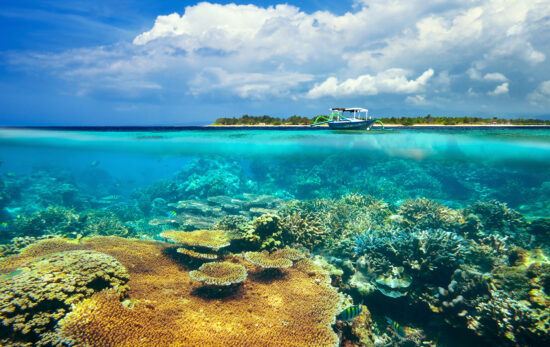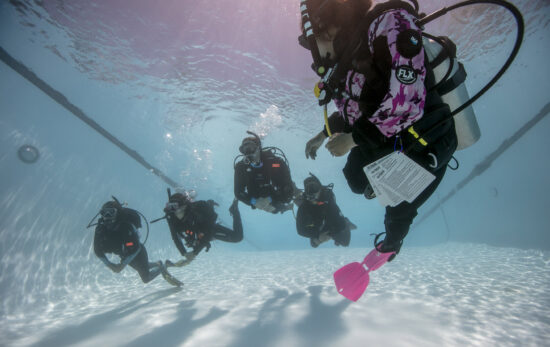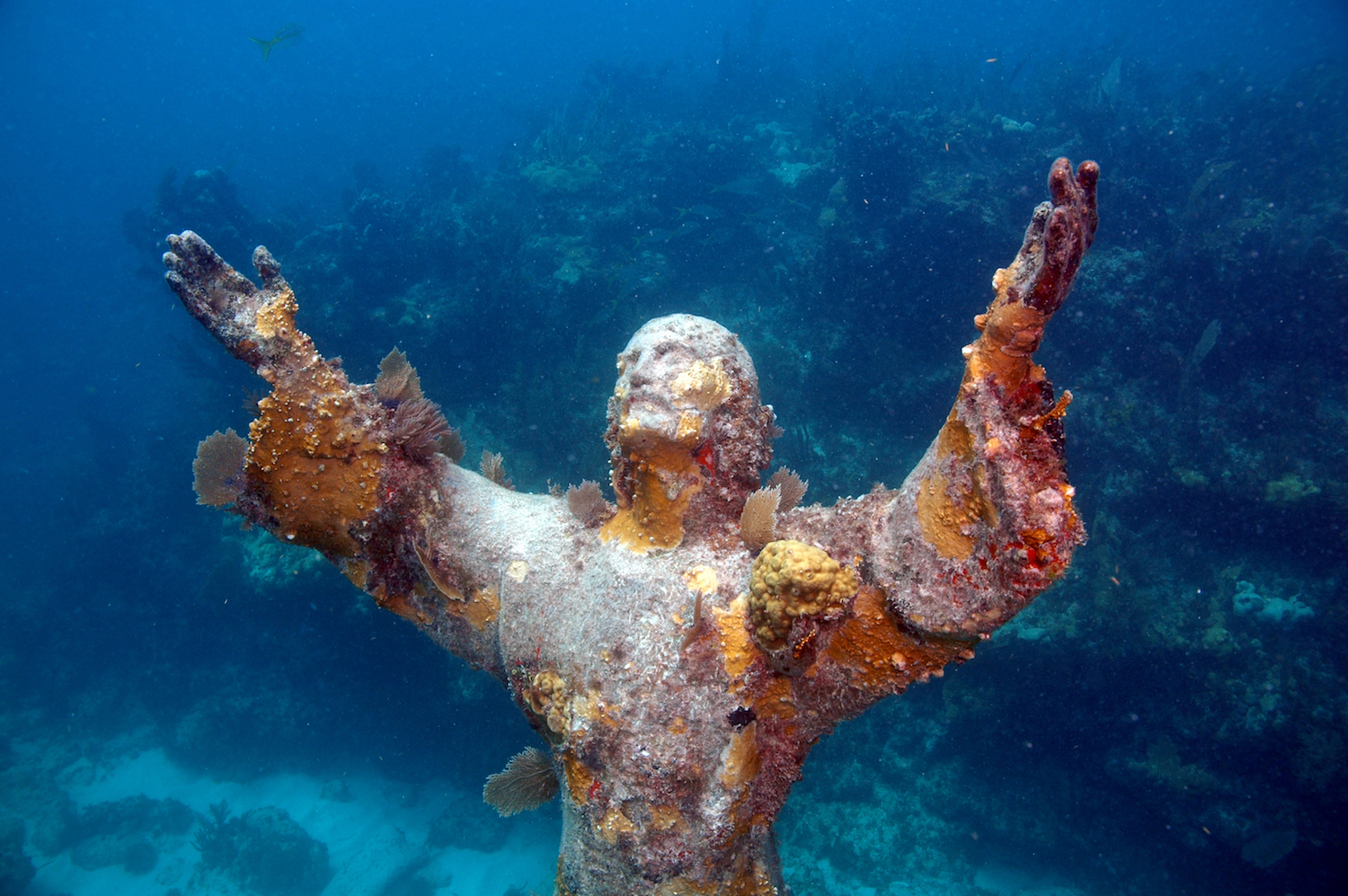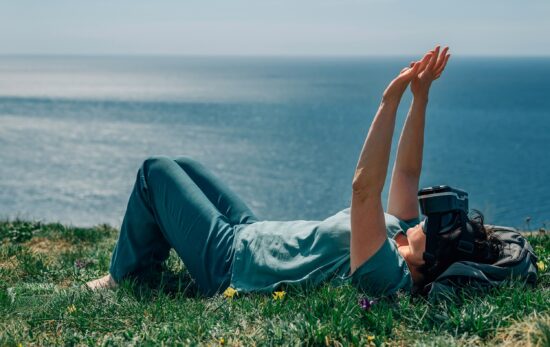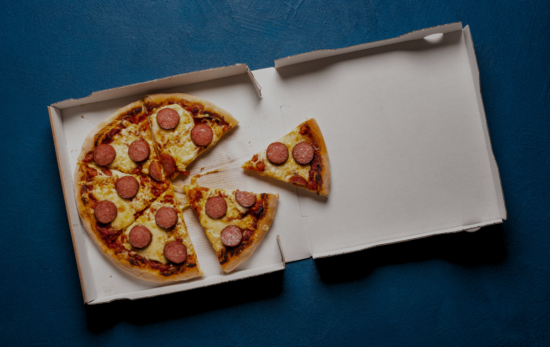On May 17, 2002 the USS Spiegel Grove sank off Key Largo, Florida. Organizers for the project hoped the ship would become a new shipwreck, dive site and artificial reef. However, in the two decades since the sinking, its become all that and so much more to the local dive community in the Florida Keys.
A Local Legend
When I first moved to the Keys in 2018, everyone told me about the Spiegel Grove. The impressive 510-foot vessel tops local scuba diving bucket lists, and for good reason! It is enormous – much larger than any natural reef structure in the area. At the time of sinking, it was actually the largest ship ever intentionally sunk to create new reef. Today, it is the third-largest.
In 2019, I finally took my first dip on this local legend. On clear days, you can sometimes see straight down to the deck from the surface, 130 feet above. Underwater, you can see across the length of the ship until it disappears into the blue. In comparison, the visibility on my first Spiegel dive was average. The water looked milky from being churned up, so I couldn’t see the next closest dive group other than contrast shapes in the water.
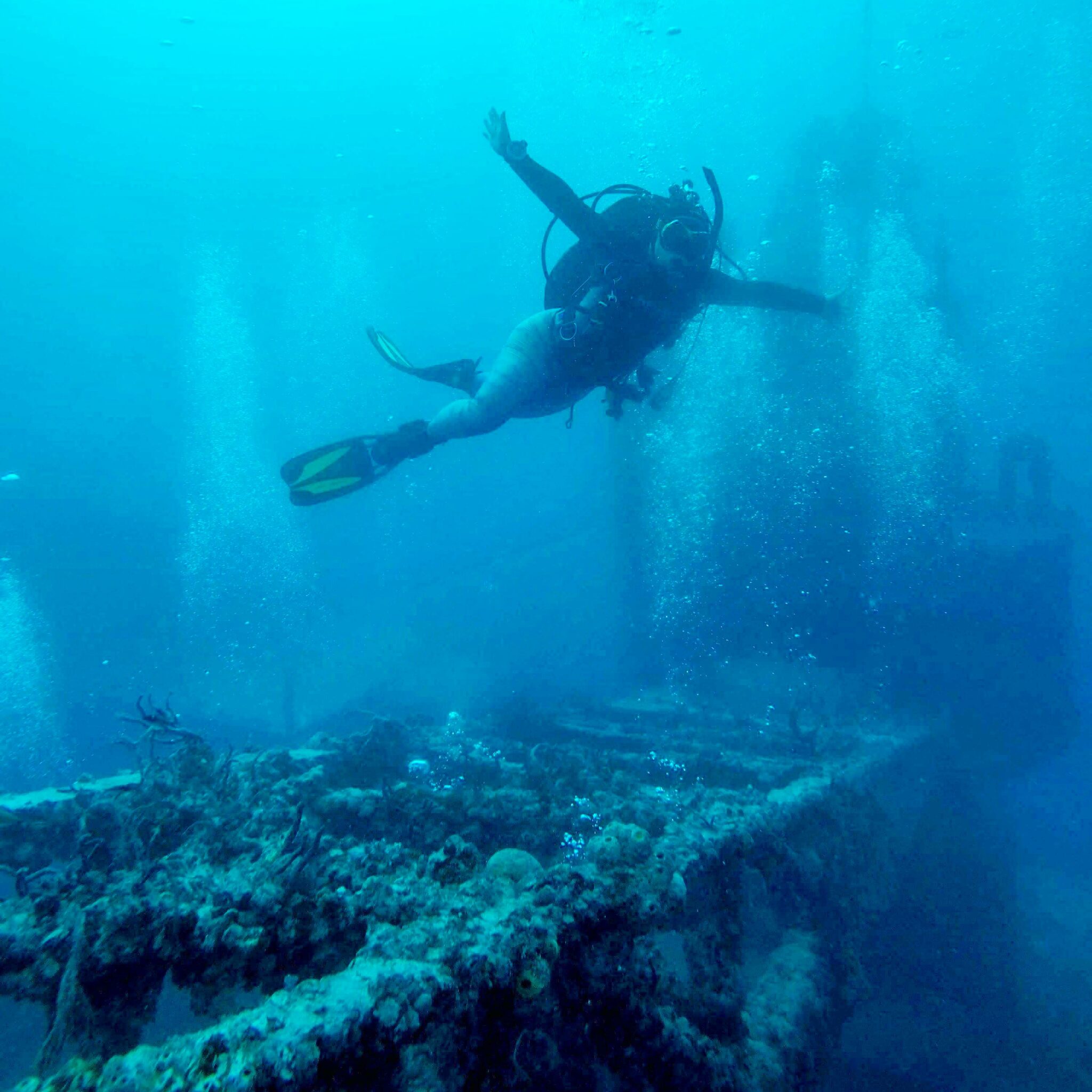
Photo credit: Tiffany Duong / Ocean Rebels.
I remember hovering near to the downline and my dive buddies, keenly aware of how deep we were. The currents were pretty strong, so we had to fight to stay close to the ship and each other. As we floated across the deck, we kept an eye on our watches and our no decompression time limits. Before I knew it, we’d maxed out our bottom time and made our way back to the downline to ascend safely.
The Saga of the Spiegel
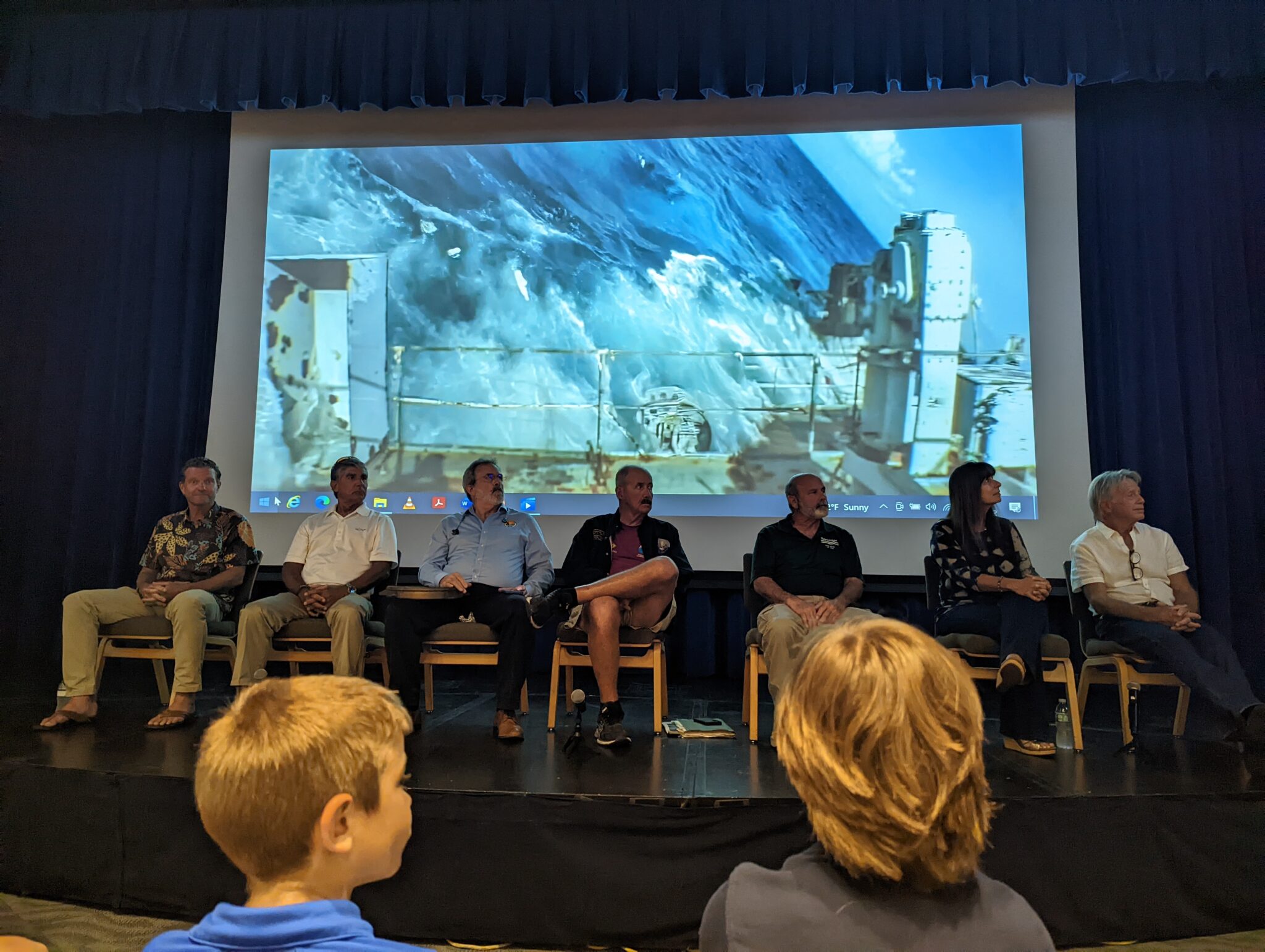
Photo credit: Tiffany Duong / Ocean Rebels.
The Spiegel Grove was originally a Navy carrier. Nine years of permitting, permissions and planning led up to May 17, 2002. The ship had finally made its way to Key Largo and was set to sink. Chaos ensued when the vessel began sinking early and “turned turtle” with its hull upside-down and high in the air.
“Turning Turtle”
Renowned underwater photographer Stephen Frink recalled, “I chatted with the Coast Guard, and they said, ‘You don’t have a shipwreck; you have a hazard to navigation.’”
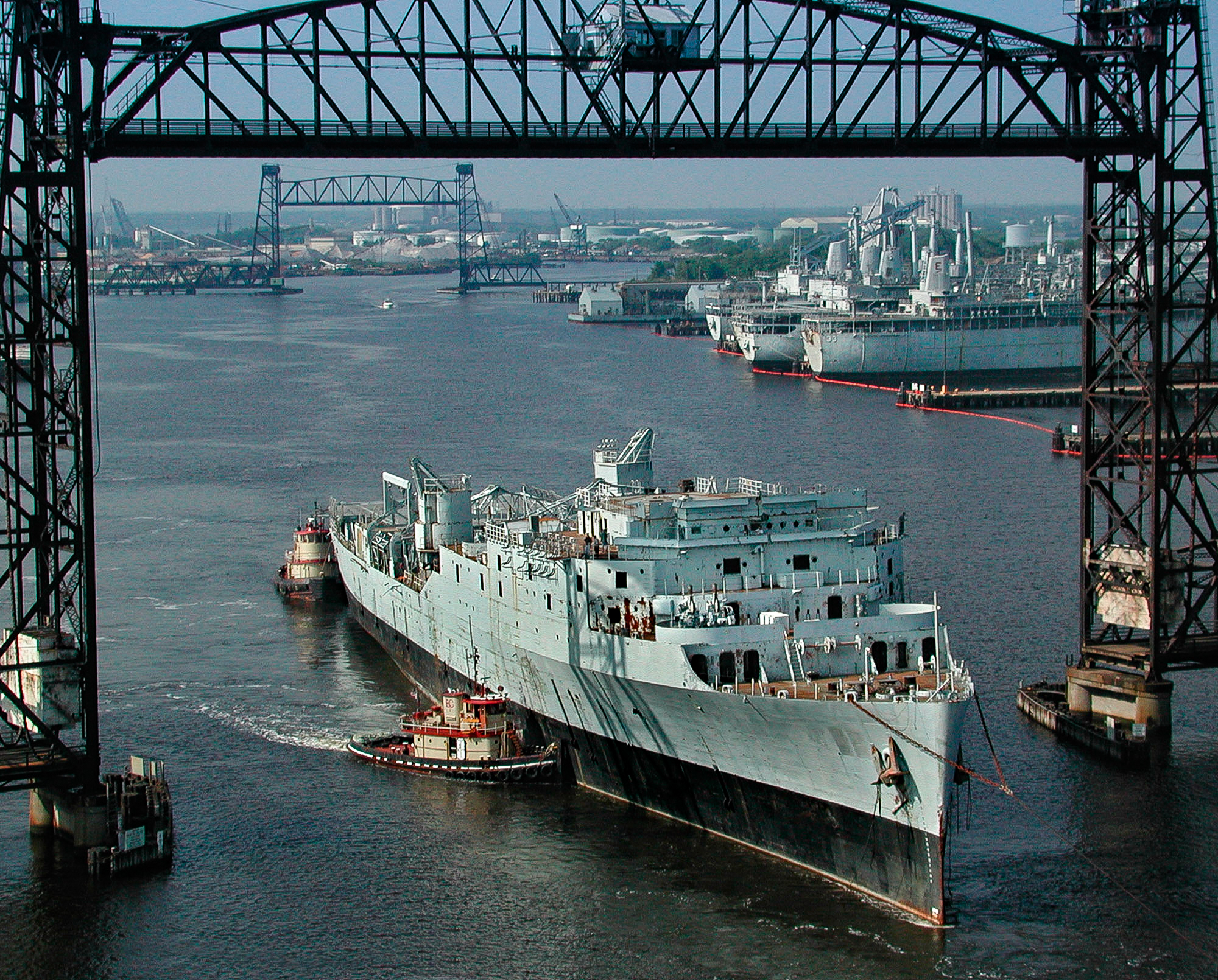
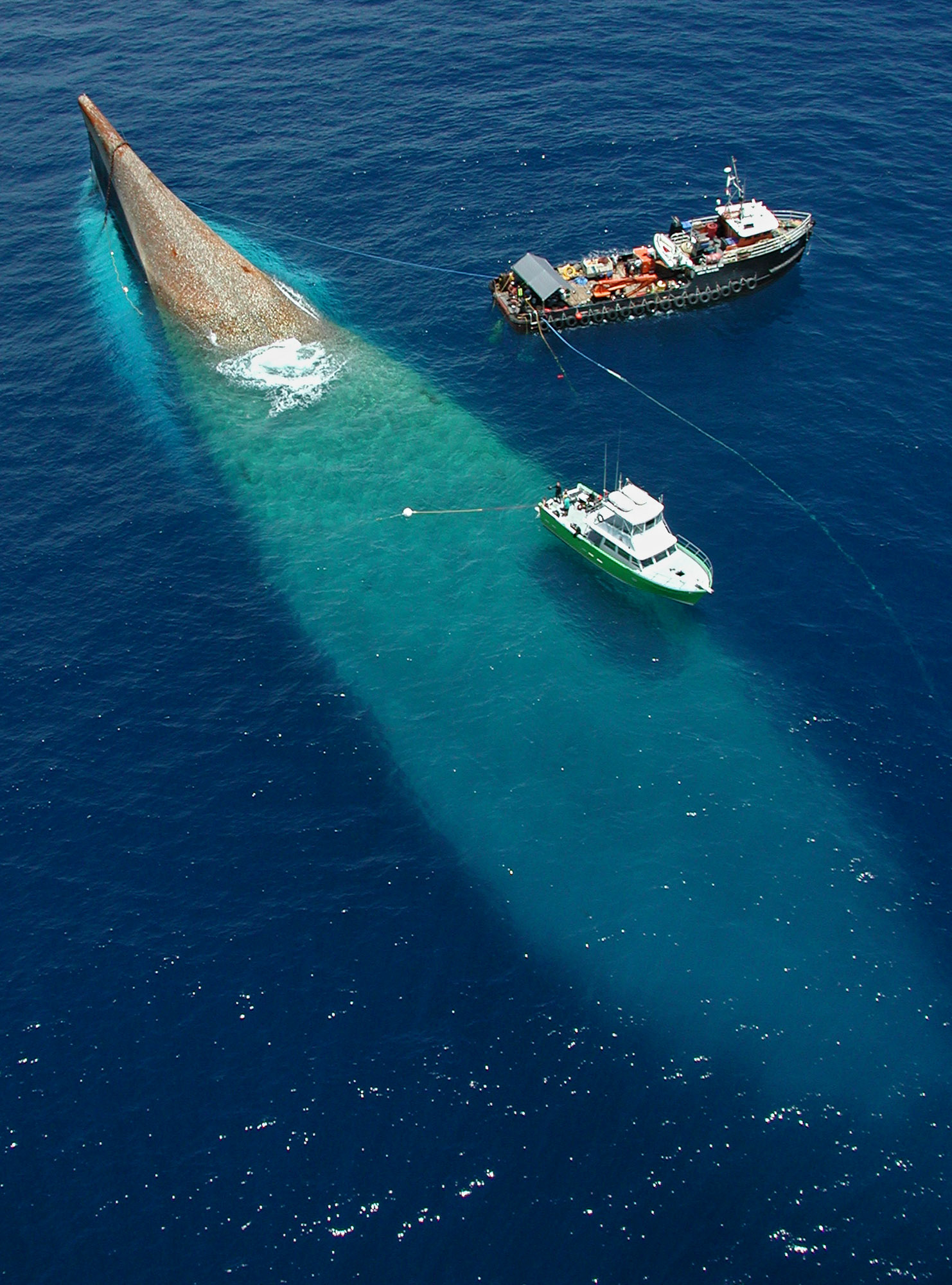
“Finally”
Salvage crews and volunteer recreational divers worked in rough seas to get the ship all the way to the bottom of the sea. On June 10, 2022 the Spiegel finally sank completely, laying on its starboard side. Regardless, divers and fish embraced the ship and began visiting it as an artificial reef. There the Spiegel stayed until 2005 when nature did what man couldn’t. An underwater tsunami from Hurricane Dennis incredibly reoriented the ship.
Diver Bob Snyder was the first to see the Spiegel sitting upright. He was so surprised, he said, “I had to ask myself, ‘Am I narcked?'”
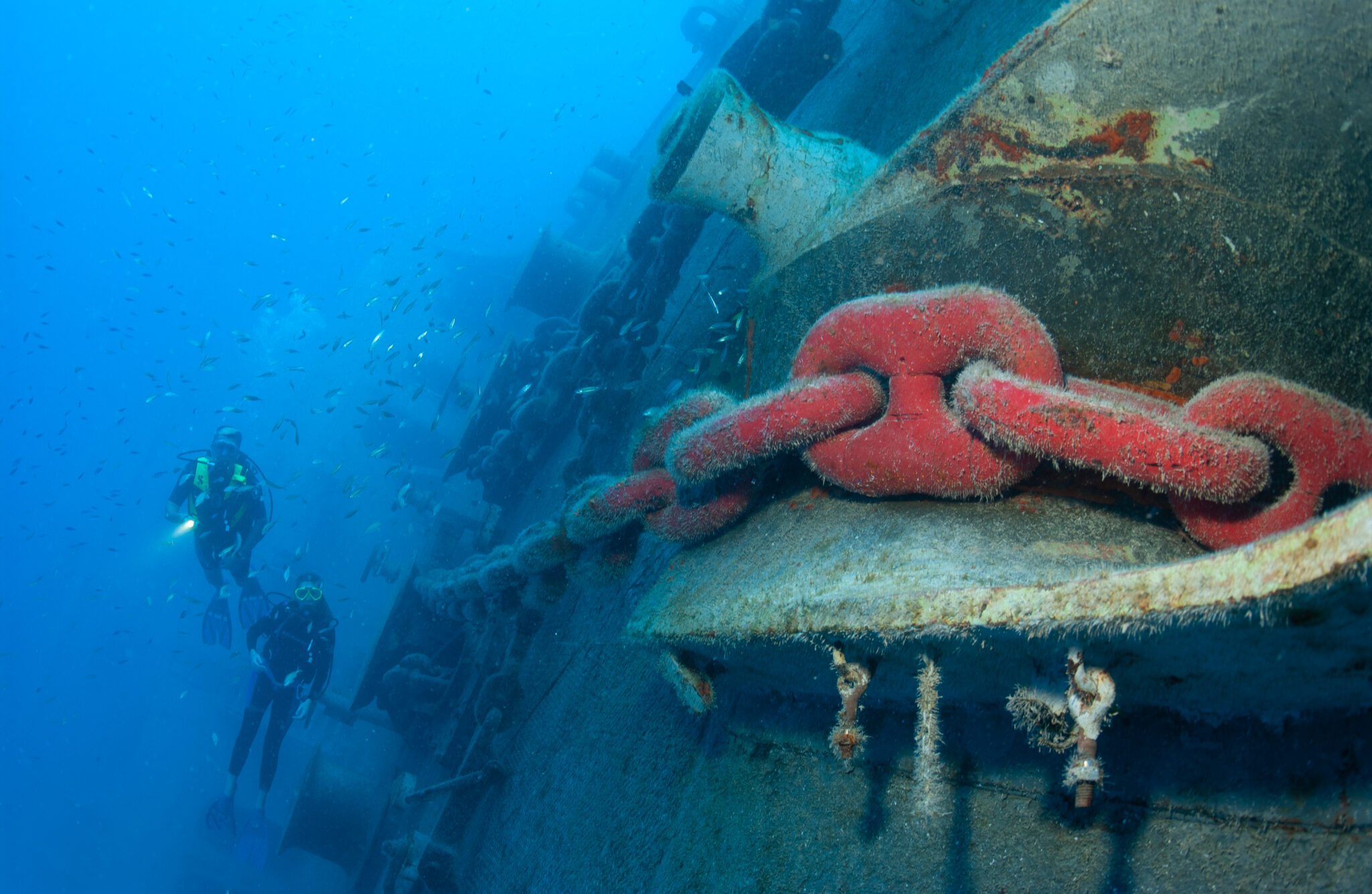
20 Years Later, the Spiegel Remains Important
Now, 20 years later, the Spiegel remains supremely important to the local environment, dive culture and economy.
First, as a world-class artificial reef, the Spiegel provides relief and complexity in an otherwise barren area. Today, encrusting sponges and soft corals cover most surfaces, and fish, sharks, eels and other animals use the ship as protection and critical habitat. There are even Goliath groupers utilizing the ship. Studies conducted at the time of sinking verified that the wreck recruited new fish species very quickly. Importantly, this occurred without emptying nearby natural reefs.
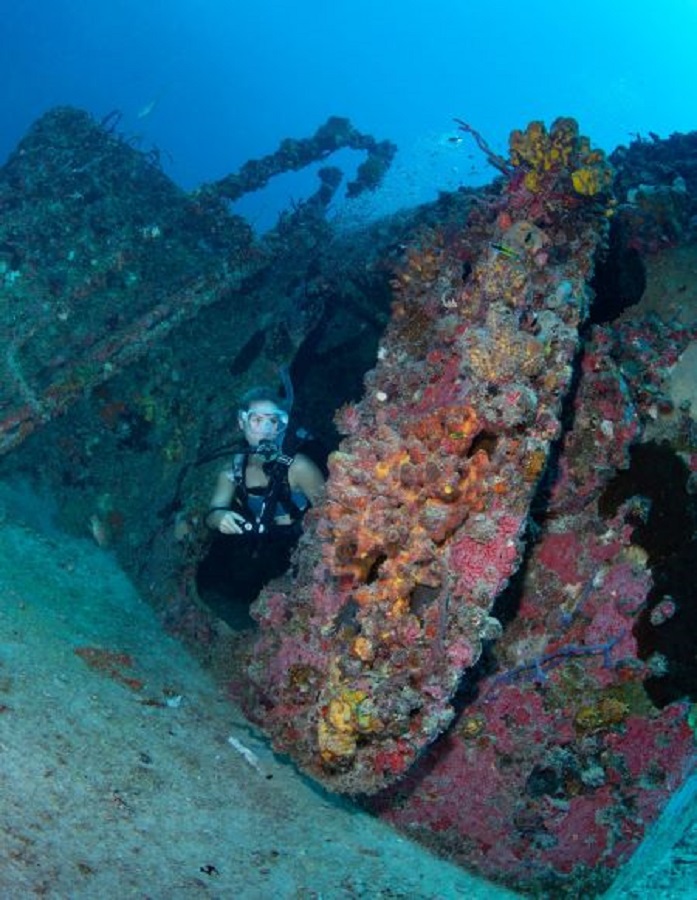
For the Florida Keys dive community, the Spiegel is a shining gem in the wreck trek crown. It is one of those “must-do” dives when you come to the Upper Keys. If and when you do dive the Spiegel, take a second to appreciate how much work it took to sink originally and how it now sits upright.
For more advanced divers, there’s an unofficial challenge to find Snoopy – a drawing of the famous cartoon that is only reachable by penetrating the wreck. We recommend earning your PADI Wreck Diver certification before exploring the Spiegel Grove.
History and Hope
In essence, this wreck supports more fish abundance, which helps keep local reefs healthy. It also serves as a world-class dive site, which brings more visitors to the Keys. Beyond that, the Spiegel Grove holds our history and our hope for the future.

